Since my latest encounter with an Arcona Yacht during my sailing trip to the Island of Bornholm last year (read about it here and here) I am a big fan of Arcona Yachts. Those boats are so beautiful that, during our stay in Klintholm where we witnessed a fleet of three boats arriving, I did have to go to their berths multiple times to admire the sleek and neat lines of the yachts. Arcona Yachts are among the most beautiful yachts I´ve ever seen.
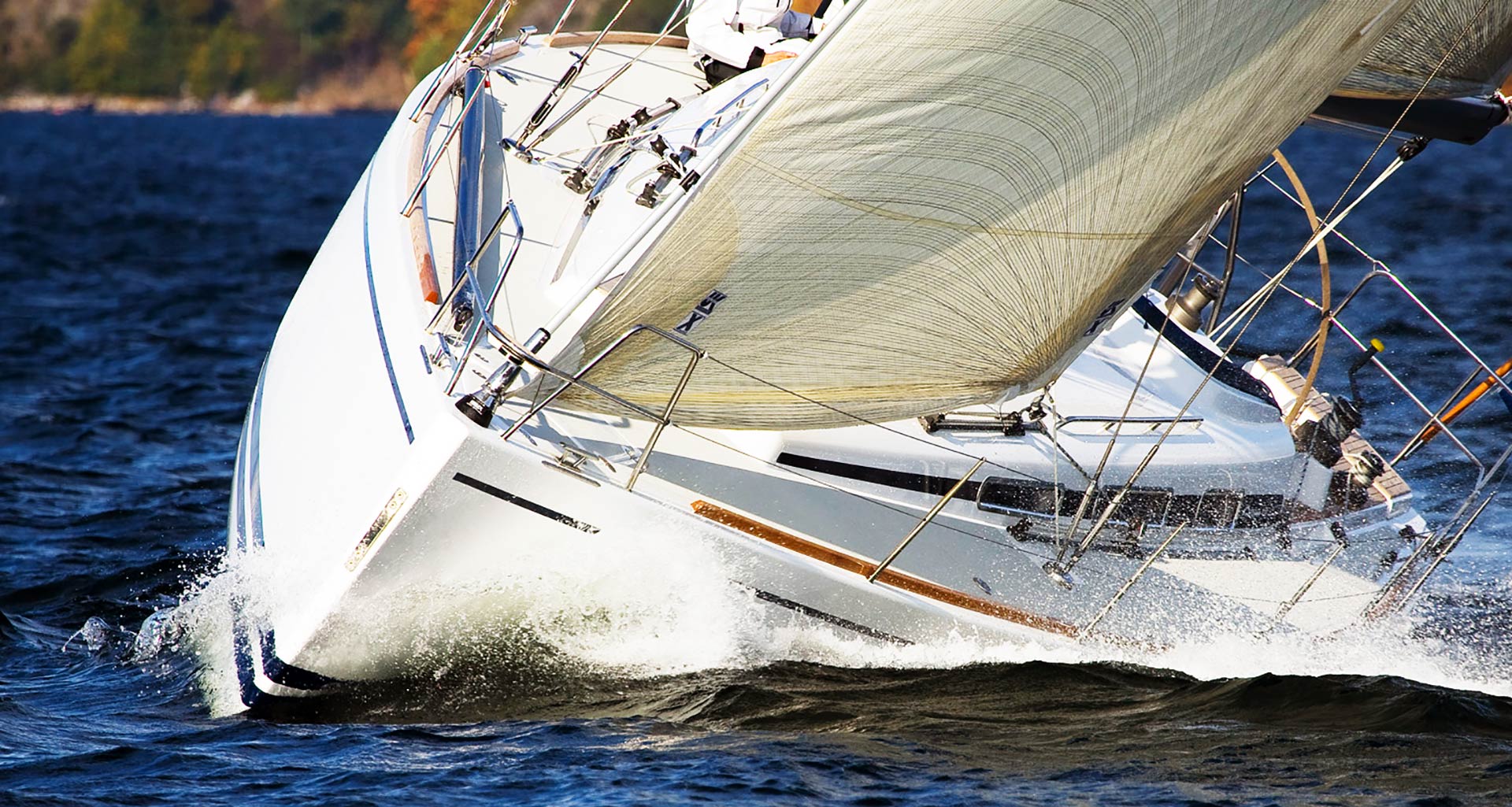
After returning I worked on acquiring Torgny Jansson, owner and CEO of Arcona Yachts, for an interview and talking to him was also a very impressive undertaking – you may read the full interview with him here. Because a lot of my questions were very technical and went deep into details Torgny as well encouraged me to reach out for Stefan Qviberg, the naval architect of the Arcona boats. And so I did. Stefan and I chatted on the phone as humble and amused, as free floating and serious and as detailed and wide spread as the Arcona yachts are: Quick, fast, determined, fun and serious. Here´s what we´ve talked about:
“I used to be a designer for real big commercial shipping hulks.”
NO FRILLS SAILING.com | Lars Reisberg: “Stefan, thanks for taking your precious time to talk to me here. First of all: How did you become a naval architect in the first place?”
Stefan Qviberg: “Well, originally I studied shipbuilding at the Royal Institute of Technology in Stockholm. You may bear in mind that back at this time, before the rise of Korea´s yards, Sweden was the third biggest shipbuilder at this time. The university in Stockholm was a perfect place to learn naval architecture from scratch. We´ve had a big water tank for towing models. The education there has had a big emphasis on making strong, very strong and durable ships. We have also been taught to care for materials. So, in a way, that´s my DNA as a designer.”
NFS.com: “When I was talking to Torgny Jansson he was praising your work in the highest tones – you are the very creator of every single Arcona yacht. Tell me how you became the principal designer of Arcona?”
Stefan Qviberg: “I first became acquainted to Arcona around the end of the Seventies. They were called “Bo Marine” back then before they´ve changed the name. I was approaching them by trying to sell a yacht design to them. They judged it was to small but I guess they have been impressed in a way because they went back to call me at – 1982 I guess – and asked for a yacht design. That was the real start then for me and the collaboration with Arcona. My first boat was the Arcona 32 and it was very successful: They´ve sold eight boats from the drawing board.”
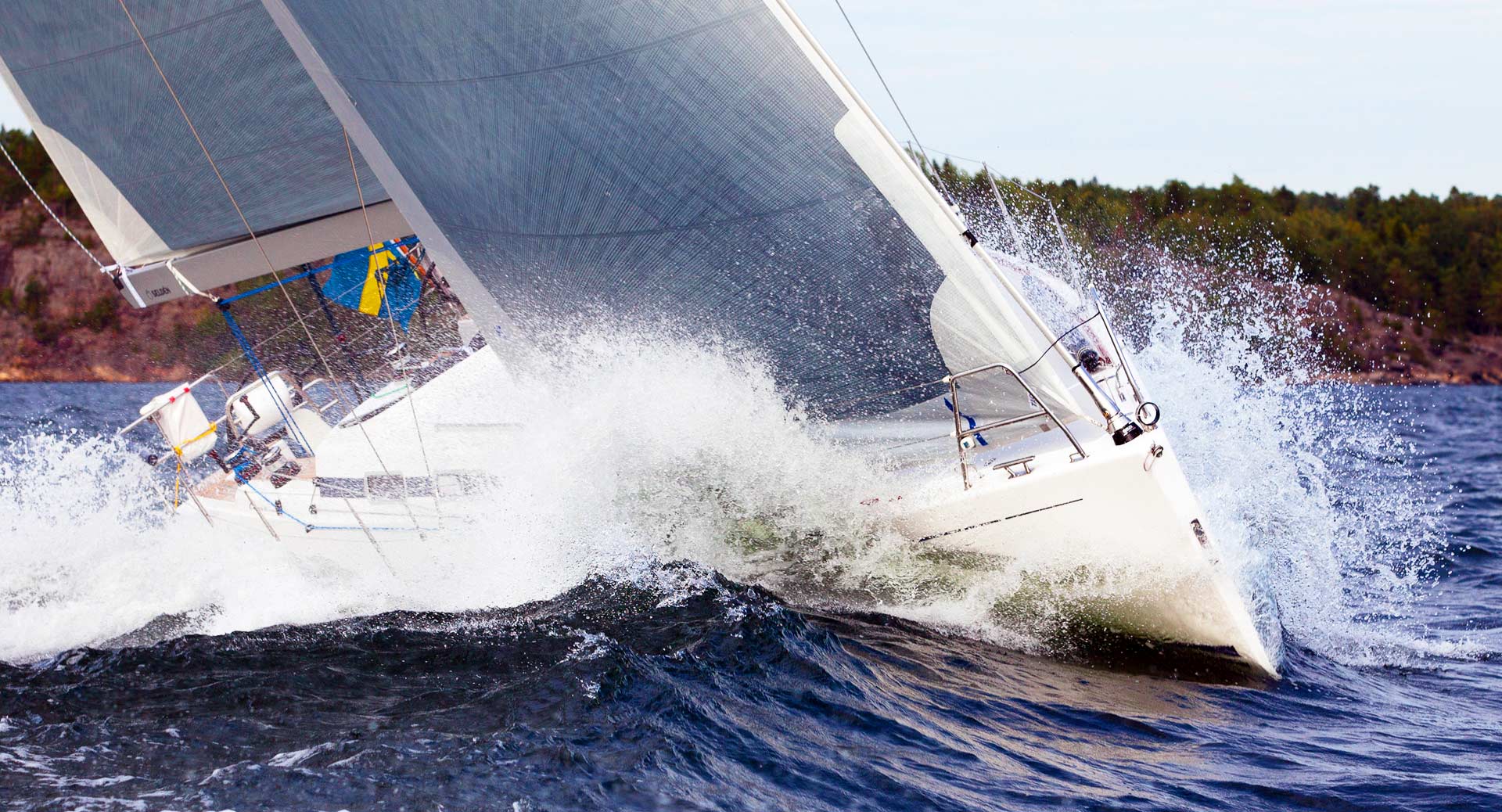
NFS.com: “Then it went off …?”
Stefan Qviberg: “Well, the real breakthrough I would say came a lot later, namely in the year 2000 when we´ve launched the Arcona 400. This was skyrocketing and the sailing world went nuts about the boat. Until then we´ve came up with Arcona 36, 38 and 40 but after 2000 we renewed and widened the range with one new boat design and size per year!”
NFS.com: “But why you?”
Stefan Qviberg: “Well, you might ask this Torgny Jansson. But I can imagine that he was pleased with my work. You see, back then I was also working for Vindö Yachts. I was not actually designing the boats but I was working for them doing calculations on hulls, strengths, stability and helping them going through the CE-certification process. By they way, this is a funny coincidence in life: Vindö, owned by Najad, has recently bought Arcona Yachts … so in a way, the circle is closing.”
“For sure, racing and travelling is in Arcona´s DNA.”
NFS.com: “When I was talking to Torgny he of course had his own view on Arcona yachts. What would you say is the DNA of the boats? What is setting an ARCONA apart from any other yacht?”
Stefan Qviberg: “Well, basically, it seems that Arcona is a very fast boat. Even faster than an X-Yacht. Performance is for sure the single most important aspect of Arcona. A time ago an English owner told me what he things Arcona is and I guess that´s a pretty good description: He said, that Arcona is an old fashioned yacht in the best meaning of the word plus a load of new things and innovation.”
Stefan Qviberg: “Sounds like you design racing boats?”
NFS.com: “Well, of course they are no thoroughbred racers. But it´s Arcona DNA that you can do lots of racing and be very competitive and successful in an Arcona as well as living on that boat even for longer periods. But I guess racing is very important to the company for sure.”

Stefan Qviberg: “Some time ago I did make an article on Scandinavian sailing philosophy with Niels Jeppesen, Magnus Rassy and Nicolai Sehested. Would you agree that there is something that differs in Scandinavian-made yachts from, let´s say, French boats? What is it and where do you think does this come from?”
NFS.com: “Yes, of course, history always plays a big part as well as geographic facts. I would say that we as Scandinavians have a strong background of sailing skerry cruisers, the Scandinavian folk boat. And in this there is again this strong connection of racing the boats in regattas and living on them. I would say that this is the heritage we breed from. For example, the French tend towards Mediterranean sailing, that´s wide open boats, lots of space for sunbathing, mostly beam reach and running. There´s a difference of course. As far as I know, in the Beneteau First-range or the Sun Fast by Jeanneau they tried to approach a performance-oriented line. Back to Scandinavia, that´s the same with X-Yachts: They derive from performance cruisers but have widened their range to the X-Cruising line and the new X-line (LINK) but it seems that they now come back to this, as you call it, Scandinavian boat style: Performance and comfort of living.”
“Being a little bit not-aggressive.”
NFS.com: “Let´s speak about the Arcona yachts in particular. Please describe your proceedings when you design a new boat? How did you develop the 465 Carbon, for example?”
Stefan Qviberg: “ “Nowadays I hardly work with a pencil on a sheet of paper. It´s CAD and CFD of course. I guess in this respect I am no different from other naval architects.”
NFS.com: “What is a design brief for a new Arcona like when Torgny orders a new design?”
Stefan Qviberg: “You see, that´s the good part: There are hardly any restrictions here. They know me very, very well and I know them. So when a new boat is due to be made, Torgny approaches me barely with details. He´s more like: Get me a new 46-footer. And then I proceed. He will add some details here and there like: Get her a new T-keel. You see, I do not invent everything new from scratch with every new design. I develop my designs step by step. It´s an evolutionary process. Most of my effort goes into strength- and weight-calculations.”
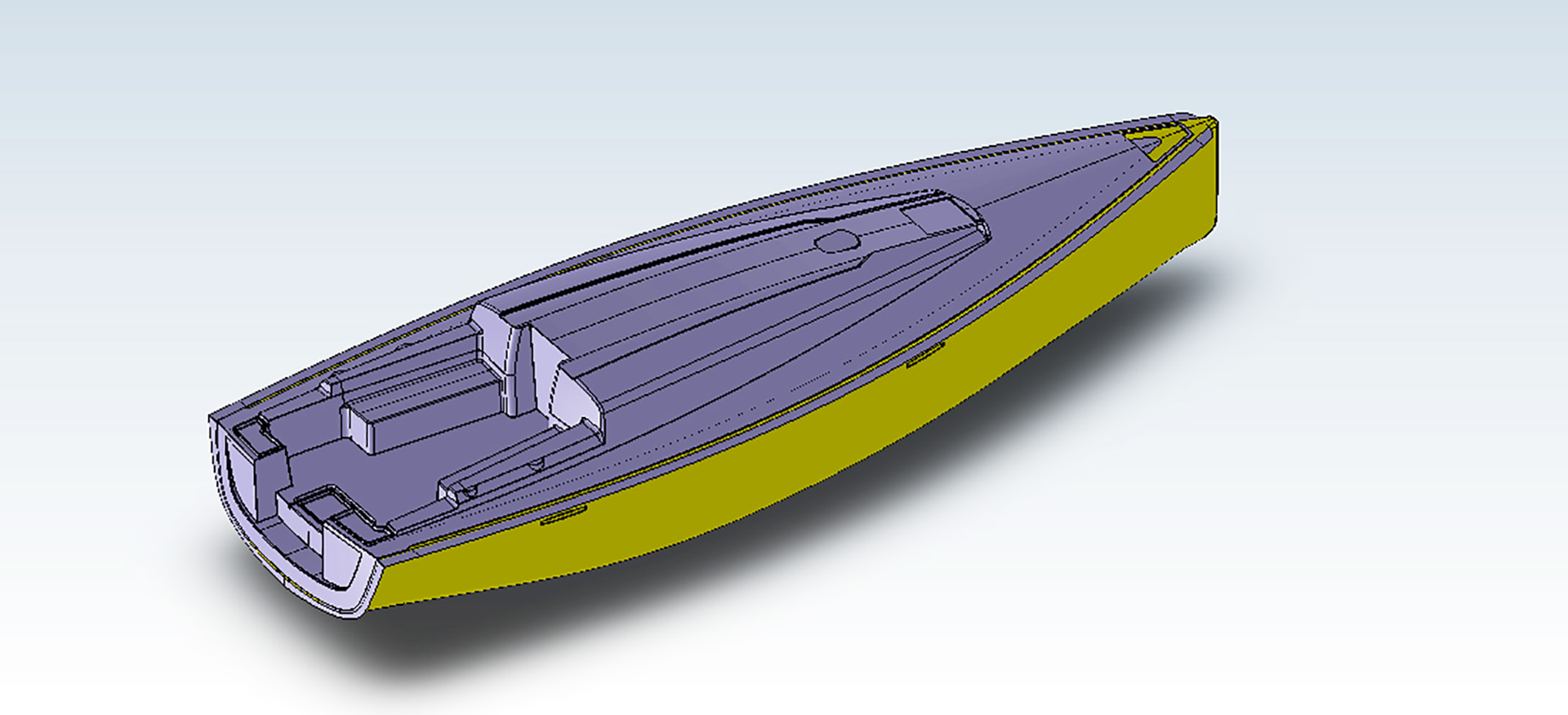
NFS.com: “Anything new in the process right now?”
Stefan Qviberg: “Yes, of course. The success of the 465 Carbon was fantastic, the boat is brilliant and her acceptance in the sailing scene was overwhelming. But she is too expensive so few people would buy her. We of course have to react. The UK as you surely know is the biggest market for Arcona but in recent years sales went down. So right now I am working on a brand new 435 and I am sure this boat will be a great leap forward. Torgny asked me to be a little bit not aggressive with this new boat …”
“An Arcona is full of secrets, I would say.”
NFS.com: “What are the main aspects, what is the core character, of an Arcona design? What is untouchable by you in order to preserve the yacht´s character – asked the other way round: When this “something” is missing, it won´t be an Arcona anymore. What is this “something”?”
Stefan Qviberg: “Oh, there are lots of secrets in the boats I would say. But you see, hull design is always a combination of so many things. In Arcona designs I would say we have developed a special way of weight distribution as I put lots of effort in the positioning of the different centres of gravity and alike. We work a lot with the stability factors from the beginning with performance in mind. I think there´s the core character of the Arcona yachts to be found.”
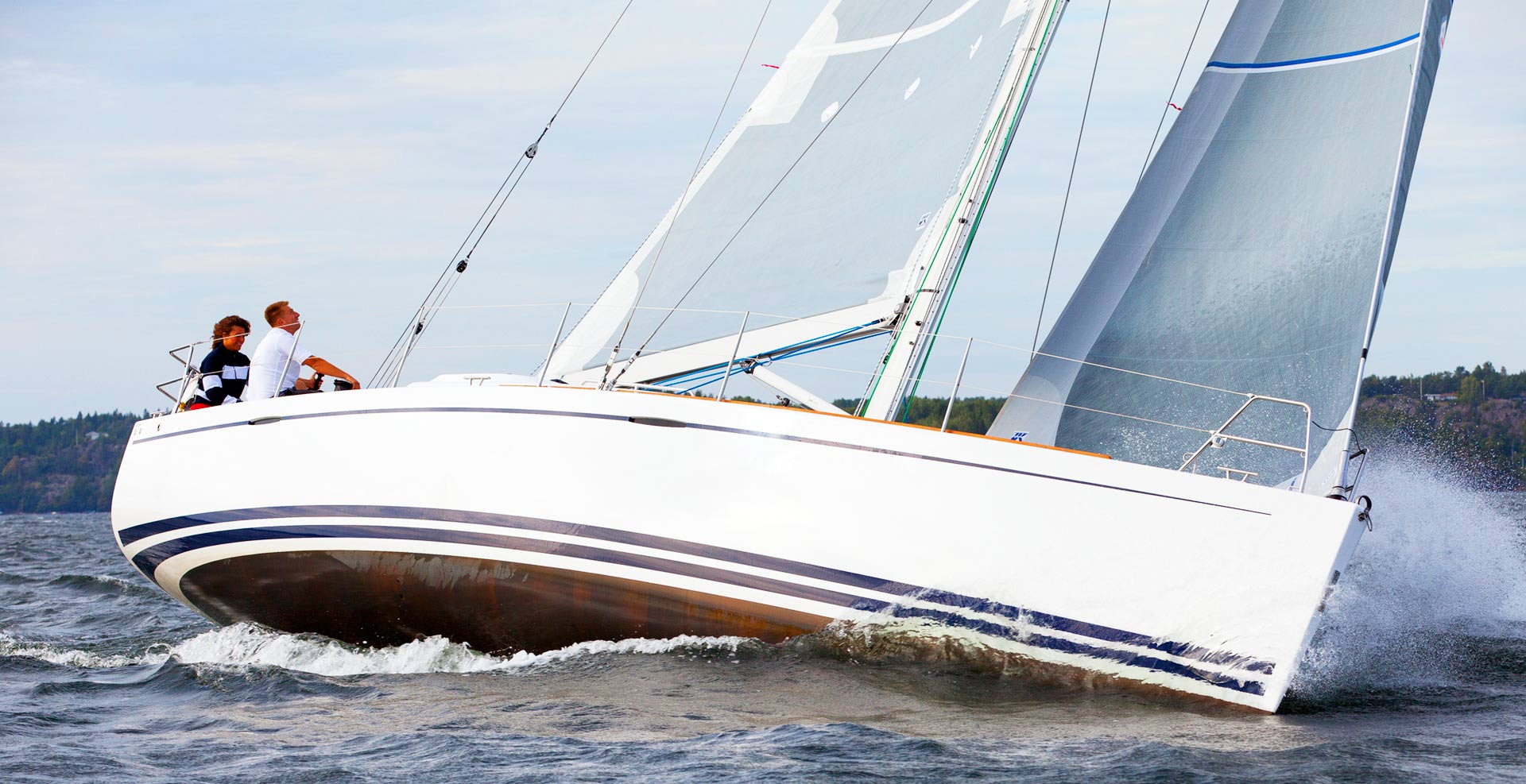
NFS.com: “So it´s a slow process?”
Stefan Qviberg: “I a way yes. We have avoided all the fancy trends of the recent years, like for example foils. It´s just not safe using it sailing here in our area, especially in the archipelago. I keep to my design and develop it step by step. I work very hard on getting the perfect appendages, making the boat as stiff and as light as possible.”
NFS.com: “When I was talking to Torgny he described Arcona also by referring to the unusual tall rigg as being very efficient. Can go into more detail here? What is the specialty of Arcona´s sailplan and where has it it´s biggest potentials?”
Stefan Qviberg: “Yes, I´ve read this statement from Torgny too. Well I don´t thing that its special. I would say it is a normal sailplan. You see, here in our sailing area we have varying winds. Especially during the summer time we have the high pressure systems with very, very light winds. Also, sometimes it´s blowing quite hard. So we need a tall rigg with lots of sail area for the light wind-sailing. It must be easy to reduce the sail area as well when windspeed increases. And by the way … such a tall rigg looks quite nice, doesn´t it?”
“Arcona´s future is a bright one.”
NFS.com: “What have been the principal changes in the boats over the years in terms of hull-shape, appendages, sailing qualities? How do you develop the Arcona-concept further?”
Stefan Qviberg: “That´s definitely the width of the stern section of the hulls. Of course that´s a big trend in yacht design and one we just cannot ignore. So the stern is much, much wider. But this is only a small detail. Most changes and the biggest evolutionary steps have been made in terms of production methods. That´s the whole universe of the infusion technology. Also, the steel frame cage in the hull. There´s most of the change happening. You see, ten years ago our Arcona 40 has had a weight of 8 tons. Now it´s down to 7 tons which is a 15 per cent decrease of weight and it´s even stiffer. This is where the future is happening. Our clients want to be competitive, so we invest a lot in making the boats lighter and stiffer. By the way, talking of production methods – back in the days when I was working for Vindö, 10, 12 years ago, they were the first ever in the business to use Divinycell foam core for the sandwich hull.”
NFS.com: “Where will Arcona go in the future?”
Stefan Qviberg: “With Arcona we have a culture of talking to our owners and our dealers. We appreciate their feedback very much. So, in future Arconas you will for example see more windows in the hull. But nothing too extreme – our owners very much love the classic performance-look and the interiors but they also embrace modern aspects.”
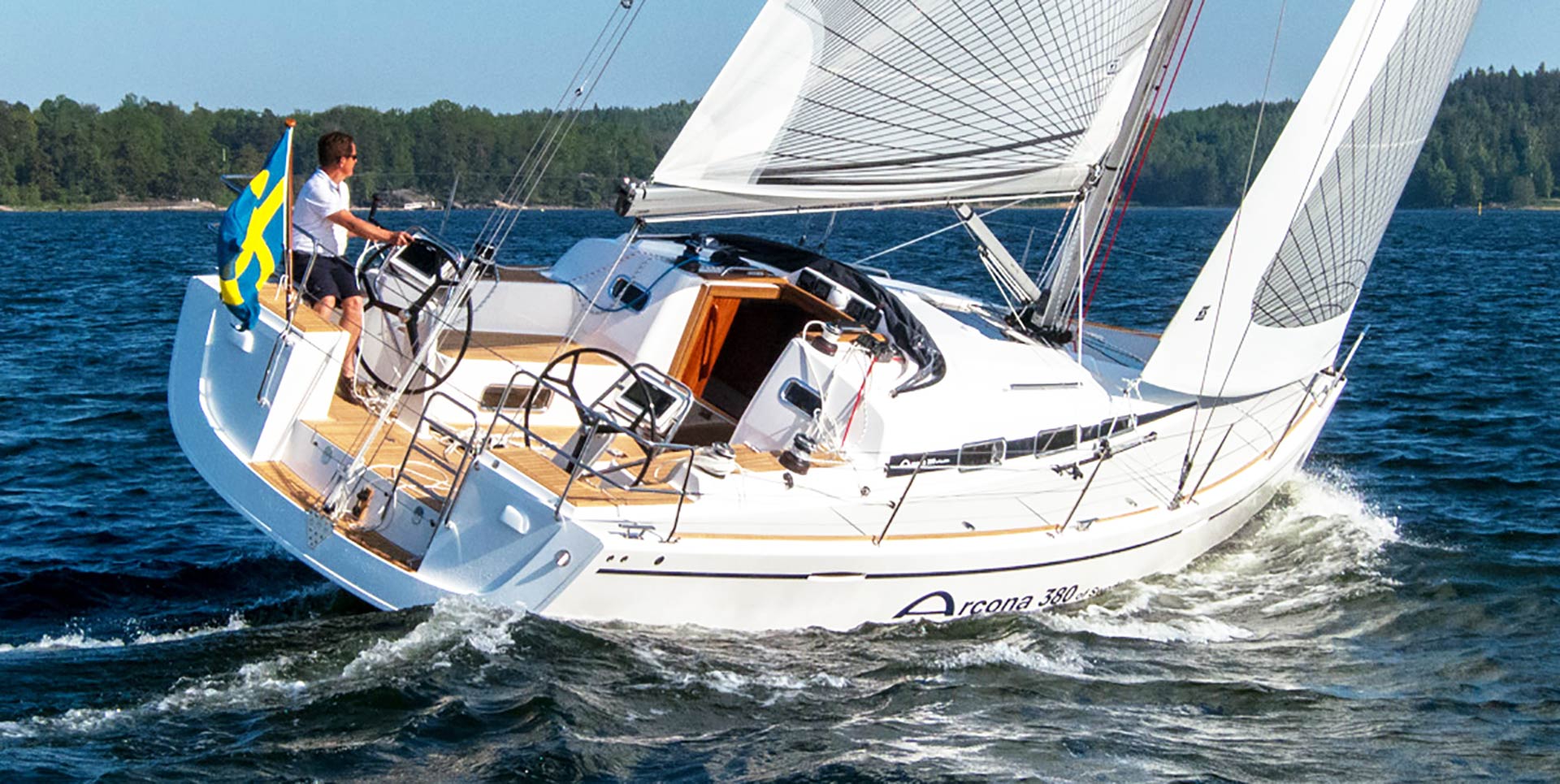
NFS.com: “What do you think will sailing a yacht be like in a 10 to 15 year time from now? Even more electric stuff?”
Stefan Qviberg: “I think the biggest influence on boat design will come from the production-side and the materials. There will be new materials for sure and I am convinced that this is the most important aspect here. I personally like the idea of mobile appendages, I would love to do a drop keel boat which will be perfect in the archipelago. In fact, 40 years ago I did design a hull like this, talking of the future … (laughs) Honestly, I think Arcona´s approach is the right way to go: Having a fast yacht is not just a fun aspect. Being able to avoid bad weather, sail fast and be in the right place at the right time is important. I see a bright future for Arcona: Fast and safe is our motto. But anyway, we are not Colin Archer (laughs again)”
Thanks to naval architect Stefan Qviberg for sharing his view in Arcona yachts. I think that this is a topic worth following as Arcona has recently been sold to Najad, which is a great combination I guess.
You might also like to read:
Torgny Jansson on Arcona Yachts
Top notch performance cruisers from Denmark: X-Yachts
Talking to Matteo Polli and Franco Corrazza of Italia Yachts
